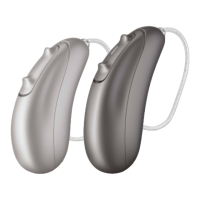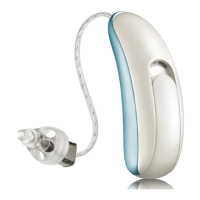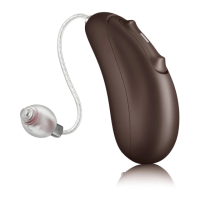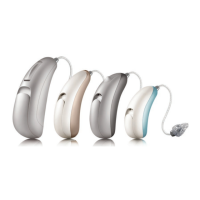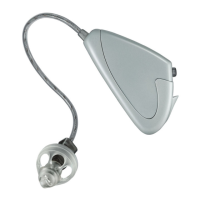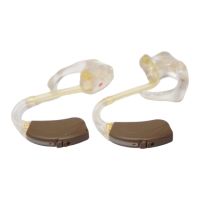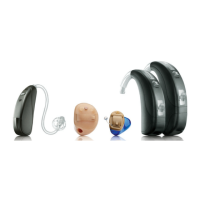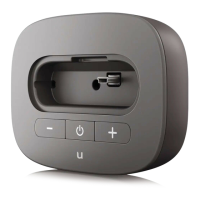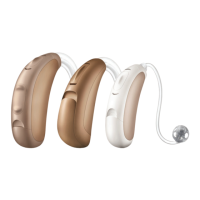52 53
• Hearing loss is not in the tting range
of the hearing aid (i.e. gain, frequency
response)
• Acute tinnitus
• Deformity of the ear (i.e. closed ear canal;
absence of the auricle)
• Neural hearing loss (retro-cochlear
pathologies such as absent/non-viable
auditory nerve)
The primary criteria for the referral of a patient
for a medical or other specialist opinion and / or
treatment are as follows:
• Visible congenital or traumatic deformity
of the ear;
• History of active drainage from the ear in
the previous 90 days;
• History of sudden or rapidly progressive
hearing loss in one or both ears within the
previous 90 days;
• Acute or chronic dizziness;
• Audiometric air-bone gap equal to or
greater than 15 dB at 500 Hz, 1000 Hz and
2000 Hz;
• Visible evidence of signicant cerumen
accumulation or a foreign body in the ear
canal;
• Pain or discomfort in the ear;
• Abnormal appearance of the eardrum and
ear canal such as:
- Inflammation of the external
auditory canal;
- Perforated eardrum;
- Other abnormalities which the HCP
believes are of medical concern
Special care should be exercised in selecting
and tting a hearing aid whose maximum
sound pressure level exceeds 132 decibels
(dB) because there may be risk of impairing the
remaining hearing of the hearing aid user. (This
provision is required only for those hearing aids
with a maximum sound pressure capability
greater than 132 dB).

